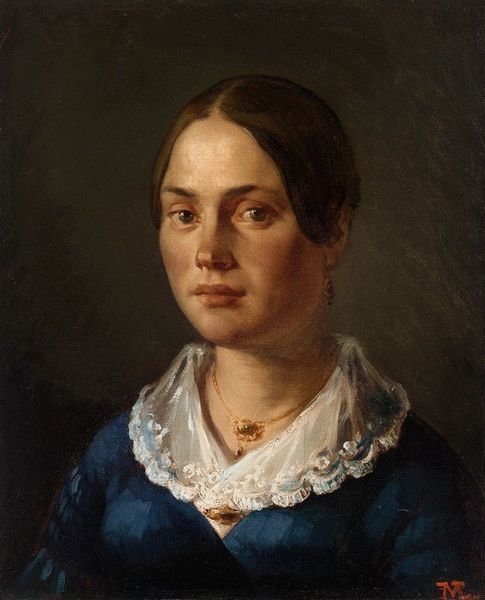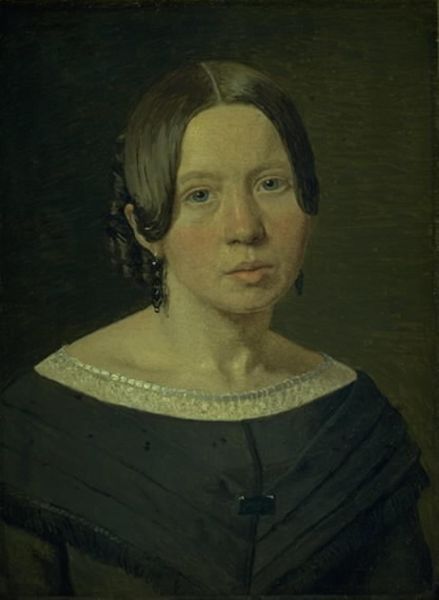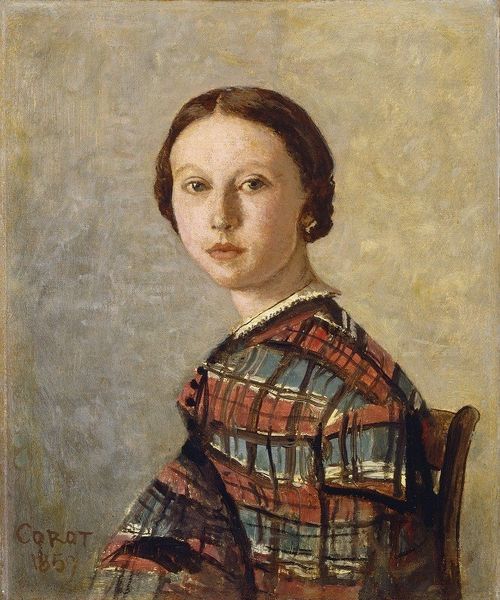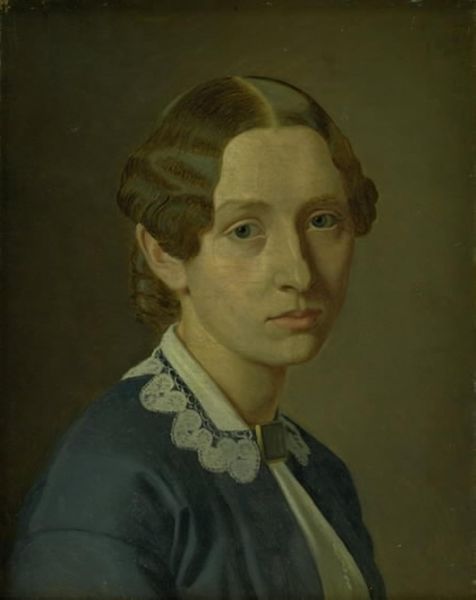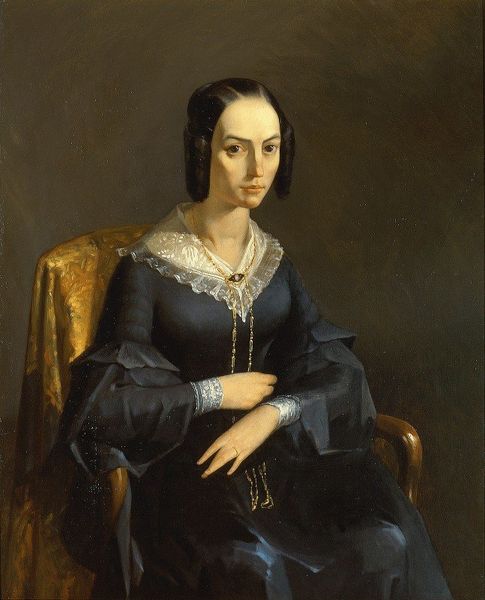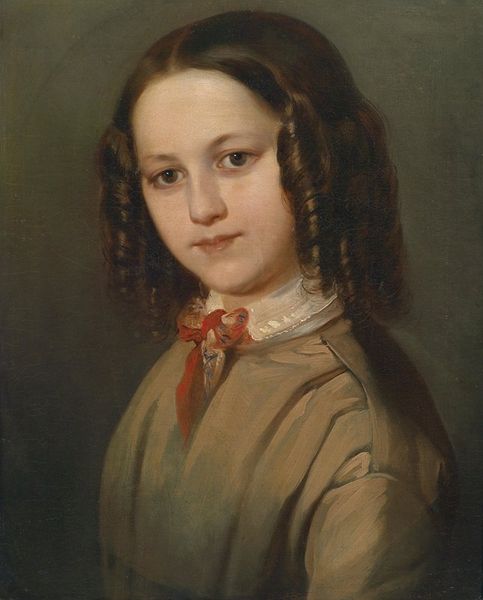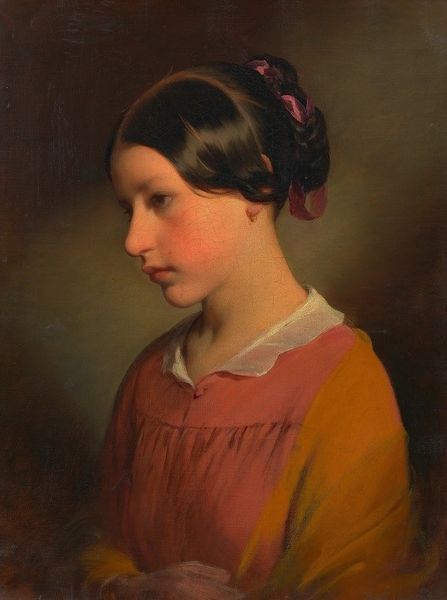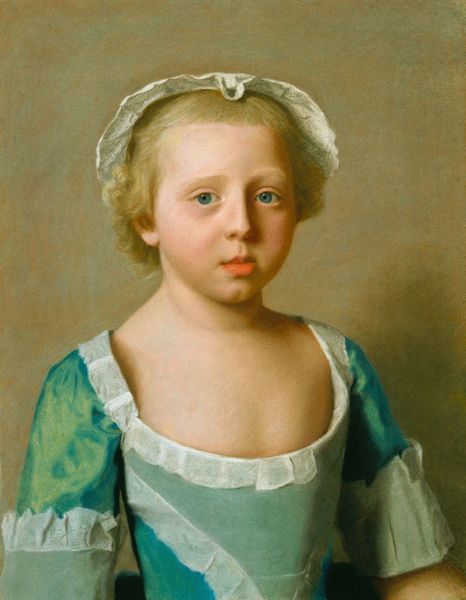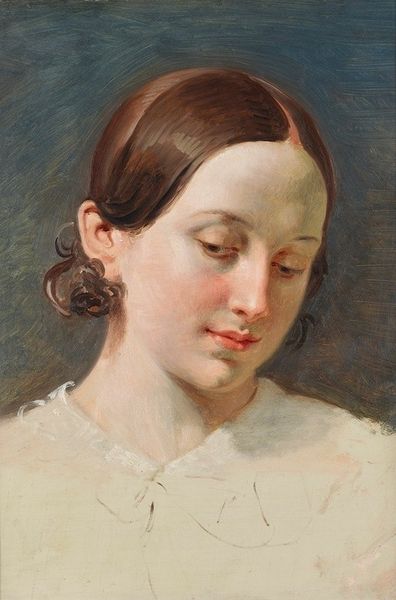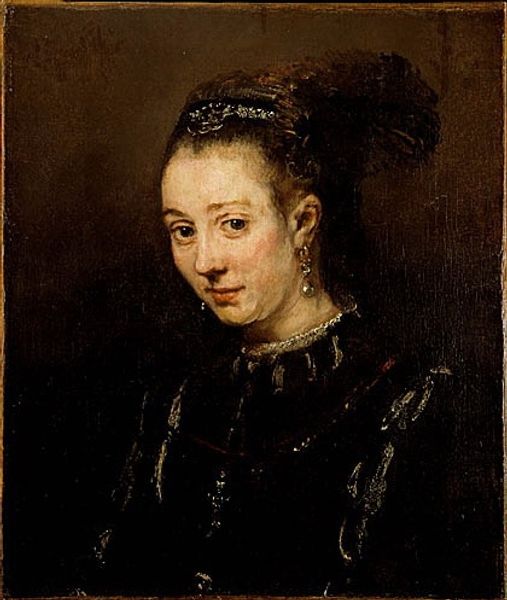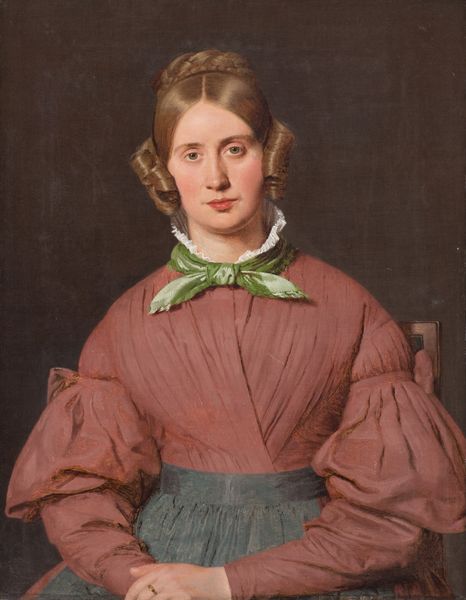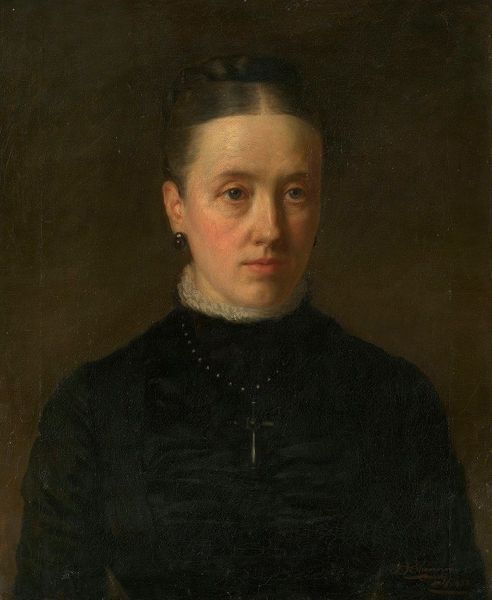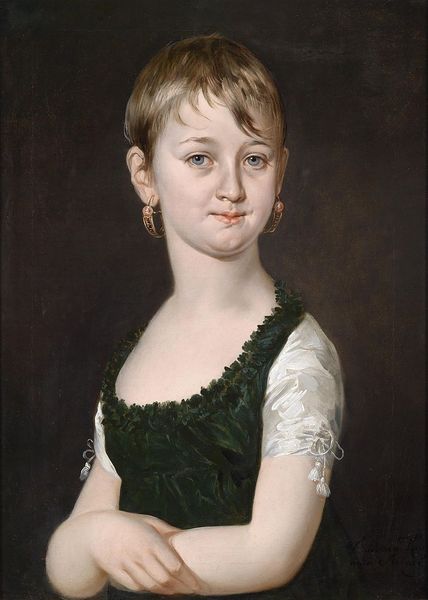
painting, oil-paint
#
portrait
#
figurative
#
painting
#
oil-paint
#
romanticism
#
portrait drawing
#
academic-art
#
realism
Copyright: Public Domain: Artvee
Editor: We're looking at "Louise-Antoinette Feuardent," an oil painting by Jean-François Millet. I’m immediately struck by the subject’s guarded expression. She seems both elegant and a little wary. How do you interpret this work, especially considering its place in art history? Curator: That guardedness, as you call it, is interesting, isn't it? We have to consider this painting within the context of 19th-century French society and the rise of Realism. Millet, while known for his sympathetic depictions of rural life, was also deeply engaged with the shifting social landscape. Think about the public role of portraiture at this time: how did it reinforce or challenge existing power structures? Editor: So, you're saying her expression could be read as a commentary on the societal expectations placed on women? Curator: Precisely. Consider the lack of idealization, so common in earlier portraiture. Millet presents her with a stark realism. How does this challenge the established conventions of depicting women in art and their place in society? What does this artistic choice by Millet tell us about the patron, as well as how the portrait could be presented in public? Editor: That makes me rethink my initial reaction. I saw wariness, but now I’m wondering if it’s also a subtle form of defiance. And it makes me think of this portrait in dialogue with other images of the period. Curator: Exactly. It becomes part of a broader visual conversation about women's roles and representation. Thinking about who commissioned this work and where it might have been displayed offers another layer of understanding. What did portraying the sitter in this way mean, not just for Millet's artistic practice, but for the sitter herself? Editor: I’m now looking at it as more than just a portrait; it's a document reflecting complex social and political currents. Thanks, I never thought about it that way. Curator: It’s these questions that keep art history endlessly fascinating.
Comments
No comments
Be the first to comment and join the conversation on the ultimate creative platform.

